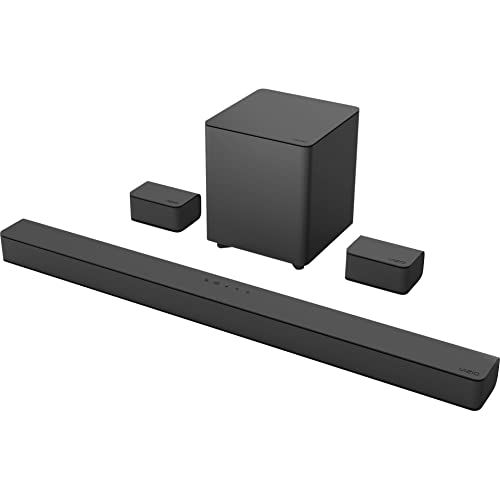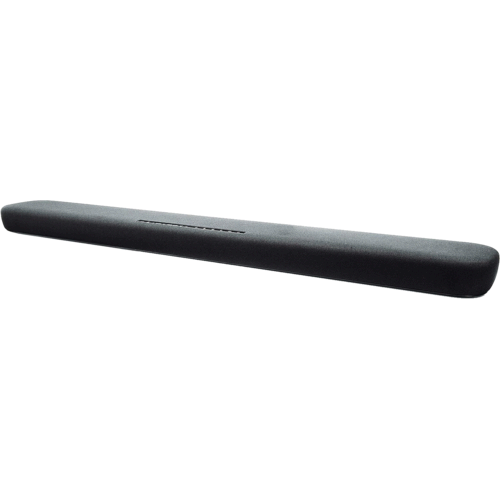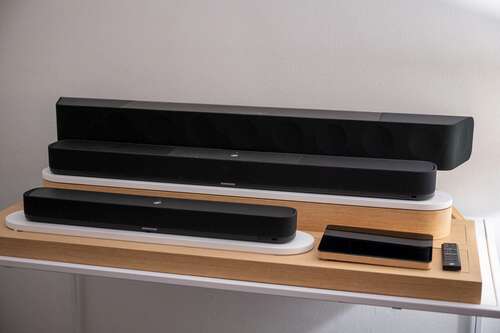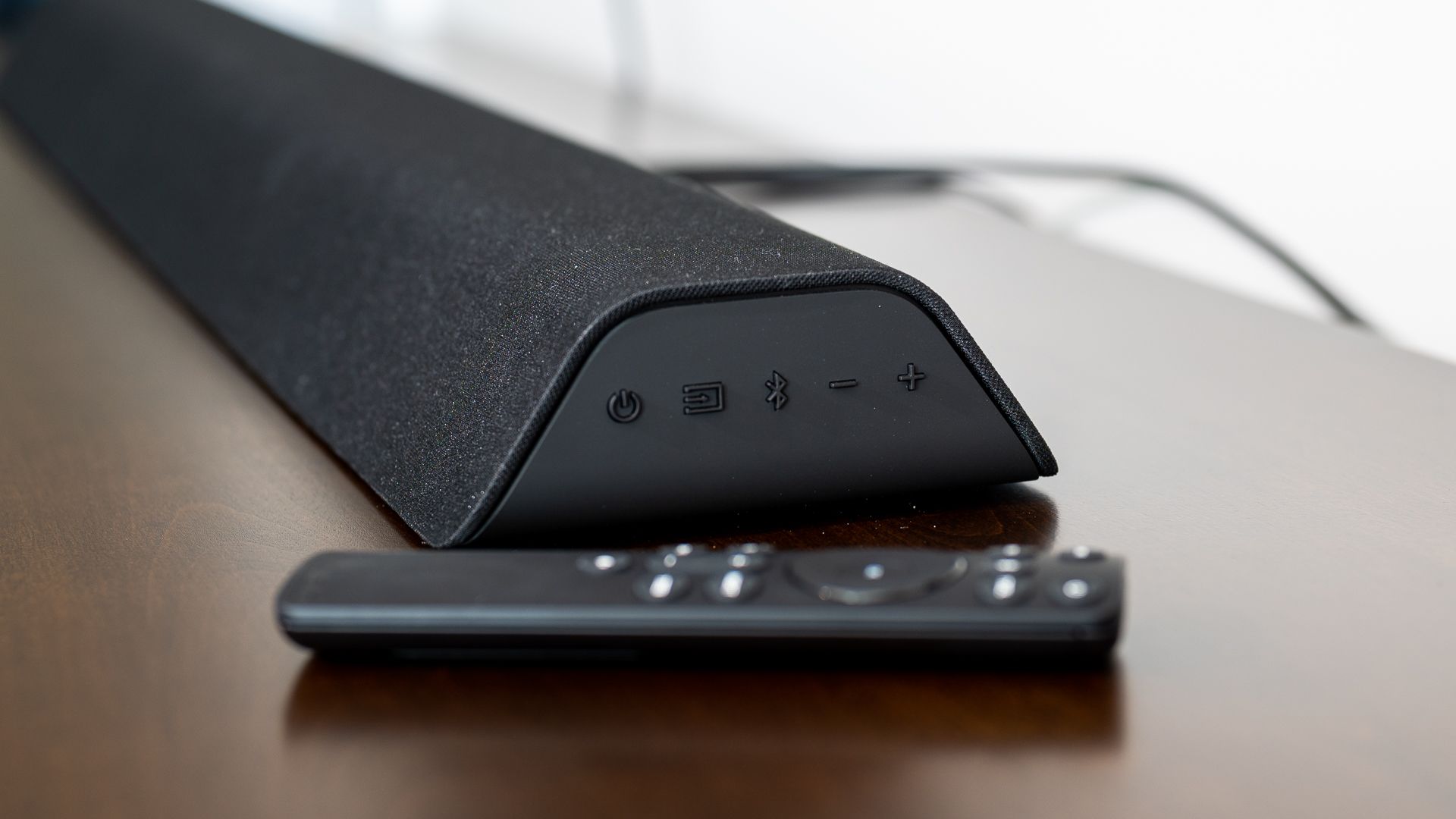Key Takeaways
- A cheap soundbar is a significant upgrade over your TV’s built-in speakers.
- Some cheap soundbars come with wireless subwoofers and surround speakers for a theatrical experience.
- When shopping, look for HDMI eARC compatibility, a 3.0-channel configuration (or greater), and Dolby Atmos decoding.
You’re tired of your TV’s crappy sound quality, so you go online to try and find a decent soundbar. To your dismay, every “best of” article insists that you need a $1,000 soundbar—anything else is a terrible, stupid, idiotic purchase. I’m here to tell you that the influencers are full of bologna.
Cheap soundbars are fine. They’re a substantial upgrade over a TV’s built-in speakers, and they’ll last for several years if you buy from a reputable brand. If you only want to spend $150 on a soundbar, buy a $150 soundbar. You won’t regret it.
A Cheap Soundbar Is Always Better Than a TV’s Speakers
Most TVs contain a pair of tiny 10-watt, full-range, downward-firing speakers. These speakers are constrained to the width of the TV, so they’re usually 3 to 5 inches long and 1.5 inches narrow—the oblong shape is fine, but the limited surface area leads to less detail, less volume, and more distortion at high volume levels.
Small speakers can’t put out a ton of bass, but they aren’t inherently “bad.” The problem is that your TV’s speakers aren’t great at projecting full-range audio across a room, especially when they’re pointed at the floor and locked in a big, plastic, resonant rectangle. The lack of a third speaker is also a problem, as modern movies and shows aren’t designed for traditional two-channel stereo.
Most soundbars priced over $150 contain three discreet full-range speakers. Due to size and cost constraints, these speakers are extremely similar to the ones that are built into your TV. Again, small speakers aren’t the problem here; the cheap soundbar “sounds better” because it isn’t pointed at the floor, its three-speaker configuration can get loud without distorting, and the soundbar’s housing is designed to avoid resonance or echo.
And, importantly, cheap soundbars can decode Dolby Atmos audio. Modern movies and shows are mixed and mastered in Dolby Atmos, meaning that they’re designed for a multi-channel audio system with a center speaker for dialogue. When this theatrical-style audio is downmixed to stereo, actors’ voices become much more quiet. A cheap soundbar, with its Atmos decoding and a trio of internal speakers, makes it way easier to hear voices when watching modern content (plus, soundbars often have a “dialogue” setting that further boosts voice clarity).
Some cheap soundbars also come with a wireless subwoofer, which compensates for the poor bass response of the soundbar’s internal speakers and provides a bit of cinematic sub-bass (deep frequencies that you can feel but not hear). If you’re a movie buff, the subwoofer is a necessity, though it may be overkill in small bedrooms and other settings. Getting your spouse or roommate to approve of a subwoofer can prove to be a challenge, too.
Cheap and Expensive Soundbars: What’s the Difference?
This shouldn’t come as much of a surprise, but high-end soundbars offer higher audio quality than cheap soundbars. I want to take a moment to explain the difference, though I also want to warn against excessive spending. A cheap soundbar is 100% better than a TV’s built-in speakers, but an expensive soundbar is only about 50% better than a cheap soundbar. Diminishing returns, and all that.
If you crack open a cheap soundbar, you’ll find three full-range speakers that are designed to produce treble, mid-range, and bass frequencies. It’s a “jack of all trades” situation. The full-range speakers do a decent job, but because they aren’t dedicated to a single frequency range, they lack detail and may produce unbalanced audio.
High-end soundbars don’t use full-range speakers. Instead, they divide the frequency spectrum among a series of tweeters (treble), woofers (bass), and mid-range drivers. Each of these components are dedicated to a single task, and as a result, they produce more detailed and “accurate” sound than full-range speakers. (Some premium soundbars use a mix of full-range speakers and discreet drivers, which is also an improvement.)

VIZIO V Series V51-H6
The VIZIO V51-H6 delivers theatrical surround sound at an incredibly low price. It comes with a wireless subwoofer and surround speakers for proper 5.1-channel audio, and it supports Bluetooth streaming from smartphones.
Also, many high-end soundbars are designed to emulate a theatrical audio experience. They’re often bundled with a wireless subwoofer and a pair of wireless surround speakers that are placed on the far left and right sides of a room. Some expensive soundbars even have integrated height speakers that shoot audio at the ceiling to mimic the overhead channels of a movie theater. These extra speakers don’t necessarily contribute to the audio quality, but they give you a surround sound experience, which can be a lot of fun.
Other factors that may contribute to a soundbar’s price are port selection, build quality, software integration, and brand name. An expensive soundbar may add several HDMI ports to your TV or feature additional inputs for external audio sources (record players, radios, etc). High-end soundbars typically support Wi-Fi streaming, which is way better than Bluetooth when you want to pair your phone for music, and some costly soundbars (like those from Sonos) are tied to an app or service that provides advanced software functionality.
Note that an expensive soundbar won’t always come with a bunch of accessory speakers. There are dozens of reasons why a soundbar may be expensive, and customers who buy expensive soundbars may be motivated by a variety of different things. This variety also exists in the “cheap” price range, albeit to a lesser extent.
What to Look for In a Cheap Soundbar
Shopping for a cheap soundbar can be a surprisingly difficult process. You need to narrow things down and focus on the features that you actually care about. If you don’t plan on using a subwoofer, for instance, there’s no point in buying a soundbar that comes with one.
There are three things that I look for in every soundbar—HDMI eARC connectivity, a trio of integrated speakers (3.0-channel or greater), and Dolby Atmos compatibility. The HDMI eARC standard ensures that a soundbar will comply with modern video and audio hardware, while the latter two features are essential for watching modern movies or shows.
If you’re laser-focused on sound quality, you should also try to find an affordable soundbar with discreet tweeters. In our price range, these tweeters will be joined by simple full-range drivers, but they’ll still provide a boost in clarity. Options like the Klipsch Cinema 600 contain dedicated tweeters and regularly go on sale for a reasonable price.
A wireless subwoofer isn’t always necessary, although it can increase a soundbar’s audio quality and provide a more theatrical experience. Some cheap soundbars, like the Vizio V51x-J6, even come with wireless surround speakers to more faithfully replicate theatrical audio. Just know that a simple soundbar and subwoofer combo will usually sound better than a surround system of the same price.
Wired and wireless connectivity may also play a part in your purchase. If you want to use a soundbar like a Bluetooth speaker (with your phone), find one with Bluetooth or Wi-Fi streaming. Digital optical and 3.5mm ports allow you to connect additional audio sources, such as record players or radios, to your soundbar.
Your soundbar doesn’t need to come from the same manufacturer as your TV. Any brand will work. That said, buying from a single brand is the easiest way to avoid bugs and other issues. This is particularly true when dealing with Sony TVs, which can be very fussy. Some soundbars also offer special features when paired with a TV of the same brand, such as the ability to use the TV’s built-in speakers as an additional audio channel.
As for size and shape—well, that’s your call. But from an aesthetic standpoint, it’s best to find a soundbar that’s the same width as your TV (or slightly smaller). Normal-sized soundbars are ideal in most settings, though ultra-compact soundbars like the Polk MagniFi Mini (which is easy to find for $250 secondhand) are perfect for small rooms or small TVs.

Yamaha YAS-109
The Yamaha YAS-109 is a brilliant soundbar with favorable features for a low price. This soundbar easily gives you the best bang for your buck.




